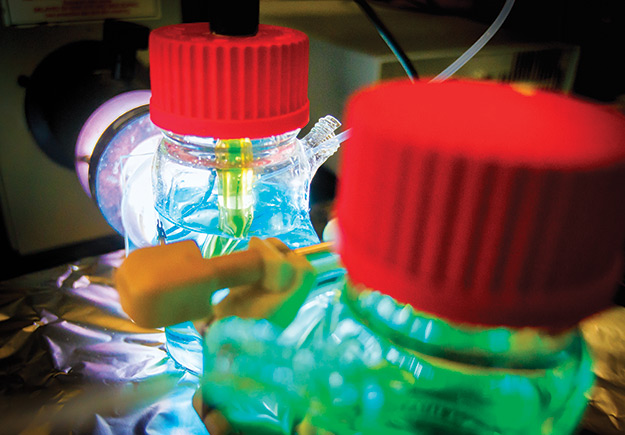Winter 2016: Energy Evolution
From carbon dioxide conversion to landfill mining, researchers at UTA are seeking viable alternative energy options.
Skip to content. Skip to main navigation.
From carbon dioxide conversion to landfill mining, researchers at UTA are seeking viable alternative energy options.
Found in everything from space shuttles to dental fillings, composite materials have thoroughly infiltrated modern society. But their potential is still greatly untapped, offering researchers ample opportunity for discovery.
Within the particle showers created at the Large Hadron Collider, answers to some of the universe’s mysteries are waiting.
Model systems like pigeons can help illuminate our own evolutionary and genomic history.
UT Arlington's tiny windmills are bringing renewable energy to a whole new scale.
The stability of our highways, pipelines, and even manholes is reaching a breaking point.
Scientists believe they have discovered a subatomic particle that is crucial to understanding the universe.
UT Arlington researchers unlock clues to the human body’s most mysterious and complex organ.
UT Arlington researchers probe the hidden world of microbes in search of renewable energy sources.
Wounded soldiers are benefiting from Robert Gatchel’s program that combines physical rehabilitation with treatment for post-traumatic stress disorder.
Tiny sensors implanted in the body show promise in combating acid reflux disease, pain and other health problems.
Nanotechnology researchers pursue hybrid silicon chips with life-saving potential.
Biomedical engineers combat diseases with procedures that are painless to patients.

An all-vanadium photo-electrochemical storage cell in operation
Solar energy without the sun? It's not as far-fetched as it sounds, thanks to a new energy cell developed by a team of UTA engineers.
Most solar energy systems rely on gathering sunlight and using its power immediately, while the sun is still out. But those systems are less efficient at night or in cloudy conditions. That's where Fuqiang Liu comes in. The associate professor and his team of engineers have developed an all-vanadium photo-electrochemical flow cell that could store large-scale solar energy even at night.
"This research has a chance to rewrite how we store and use solar power," says Dr. Liu. "As renewable energy becomes more prevalent, the ability to store solar energy and use it as a renewable alternative provides a sustainable solution to the problem of energy shortage. It can also effectively harness the inexhaustible energy of the sun."
As Dong Liu, lead author of the study, explains, "We have demonstrated simultaneously reversible storage of both solar energy and electrons in the cell. Releasing the stored electrons under dark conditions continues solar energy storage, thus allowing for unintermittent storage around the clock."
Dr. Liu, along with Liu and doctoral candidate Zi Wei, published their work in a recent edition of the American Chemical Society journal ACS Catalysis. The research was funded by a $400,000 Faculty Early Career Development grant from the National Science Foundation. The team is now working on building a larger prototype.